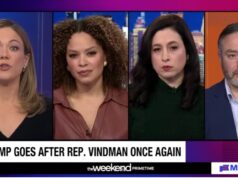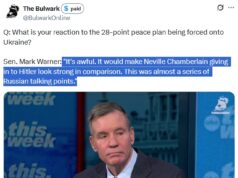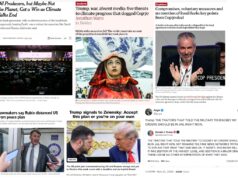PART ONE: THE SLAVE PATROLS
Today’s American NRA gun enthusiasts and their opponents, gun control advocates, are parsing every word (and comma) of the Second Amendment to make their cases, and thus determine public safety policy. We are even presented with re-written history and made-up historical narratives, based on twenty-seven words:
A well regulated Militia, being necessary to the security of a free State, the right of the people to keep and bear Arms, shall not be infringed.”
To most Americans, these words conjure up visions of minutemen rushing to the defense of liberty at Lexington and Concord; it is assumed that must be why the Founders inserted a “well-regulated” militia in The Bill of Rights. This misleading myth has cooked in the American collective consciousness for years, reflecting what Dr. Carl Bogus, writing in the 1998 UC-Davis Law Review called the judicial “collective rights” theory, in which the Second Amendment “grants people a right to keep and bear arms only within the state-regulated militia.”
INDIVIDUAL VERSUS COLLECTIVE RIGHTS AND INSURRECTIONISM
This long-standing (but relatively dormant) judicial interpretation of “collective rights” began to change in the 1980’s under a sudden, calculated barrage of “books, articles… symposia, and even entire organizations,” all designed to change that “collective rights” interpretation to the “individual rights” theory, which “erects constitutional barriers to gun control legislation.” This campaign to re-interpret the Second Amendment was led by the NRA and a particular wing of the “individual rights” idea called by legal scholars “insurrectionist theory.” As you might suppose, the underlying premise here is that an armed citizenry is prepared to, and has the right to, fight its own government. That belief explains the fierce insistence on civilian ownership of assault weapons and unlimited ammunition: rebellion against tyranny is regarded as the ultimate patriotism—- it is a much-loved fantasy of most hard rightists. Timothy McVeigh and the Waco shoot-out were apparently eruptions of insurrectionism.
Where did all these interpretations of the Second Amendment come from? What did its author, James Madison, and other Founders, really have in mind when he carefully crafted its sparse wording?
There is a monumental battle shaping up between the NRA/Tea Party insurrectionist faction (concealed under the cloak of individual rights) and the public safety/gun control collective rights faction, and it will probably end up in the Supreme Court. As in so much of American politics, it pits the same (mostly Northern) federalists against the same (mostly Southern) states’ rightists, the very factions who, in 1787, had patched together the Great Compromise at the Constitutional Convention in Philadelphia (described in another diary The Stalking Horse) which protected the Southern states’ “peculiar institution,” (i.e., slavery), thus inducing those slave states to ratify the Constitution.
The Federalists had prevailed, however, when it came to granting the Congress not only the power to “raise and support Armies,” but to “provide for calling forth the Militia to execute the Laws of the Union, suppress Insurrections and repel Invasions” (Article 1, Section 8). Southern states’ rightists may have disliked the idea of a standing army, but they desperately feared giving the federal Congress authority over a national militia. They suspected Northerners would use that Congressional authority one way or another to abolish slavery, which would not only destroy the economic and social systems of the slave states, but expose the ruling whites to the wrath of their former chattel (about 45 percent of Virginia’s population was black in 1788). Virginia therefore demanded that a Bill of Rights limiting federal powers be added to the Constitution, most especially to include a clause re-affirming a state’s control of its own militia.
MILITIAS AS SLAVE PATROLS
The “militia” of the final version of the Second Amendment therefore refers to state militias, not national or federal—- Madison changed “free Country” to “free State” to placate his fellow, slave-owning Southerners, who demanded explicit approval of the right of a state to have its own traditional, independent militia. These militias had actually been organized and regulated by Southern colonial governments beginning in the 1600’s as slave patrols. Their purpose was to guard against and put down slave revolts, something all white Southerners rightly feared, because of numerous bloody uprisings like the infamous Stono Rebellion, South Carolina, rebellion of 1739, or, just as frightening, the offer of freedom made to slaves during the Revolution by the British General Henry Clinton. When debating approval of the Constitution, Patrick Henry and other Virginia slave-owners were downright paranoid about the possibility that Northerners might establish a federal militia requiring all men including blacks to serve, and then free those who were slaves because of their military service (as General Clinton did during the Revolution).
As Thom Hartmann proves in his article in Truth-Out the Second Amendment was included in the Bill of Rights solely to “preserve the slave patrol militias in the southern states, which was necessary to get Virginia’s vote” to approve the Constitution. Every Southerner clearly understood that “well regulated militias” kept the slaves in chains, and, with a few exceptions, every white male, whether he owned slaves or not, was required to serve at some point in the slave patrol (that’s what they often called it). Hartmann writes: “Little did Madison realize that one day in the future weapons manufacturing corporations, newly defined as ‘persons’ by the Supreme Court some have called dysfunctional, would use his slave patrol militia amendment to protect their ‘right’ to manufacture and sell assault weapons used to murder school children.”
ENGLISH ORIGINS OF THE BILL OF RIGHTS
Like the Constitution itself, the Bill of Rights drew heavily from English political events that were well known to and understood by all the Founders. There is a direct link running from Britain’s Glorious Revolution of 1688, which replaced Catholic King James with the Protestant sovereigns William and Mary, along with the subsequent English Declaration of Rights of 1689 laying out the right of Parliament to arm selected Protestant subjects against a Catholic King, as well as to keep that king from disarming Protestants, through the American Revolution and the Constitutional Convention of 1787, to the American Bill of Rights, then on to our Civil War, and, finally to the debate today about the Second Amendment, gun control, and public safety.
When Madison devised the Second Amendment, writes Dr. Bogus, he “needed to allay the fear that the militia might be disarmed, leaving whites defenseless against blacks. Madison followed Parliament’s solution… by transferring the power to disarm the favored group (Protestants and the militia) from the distrusted arm of government (the Crown and Congress) to a more trusted authority (Parliament and the states).”
The Second Amendment therefore began as another part of the Great Compromise which brought the Southern slave states into the Union, and had only a marginal connection, if any, to those now-famous minutemen (indeed, the Revolutionary generation had scant respect for “militias” as such, inasmuch as they had not performed well in the war, being undisciplined and prone to desert under fire). The eighteenth century words of the Amendment meant something different from what we understand them to mean today, but, like the all the other carefully chosen words of the Constitution, are flexible enough to allow us to change with the times. So, where are we today, and where can we—- and should we—- go in setting policies based on the “right of the people to keep and bear Arms?”
Part II will talk about these questions













